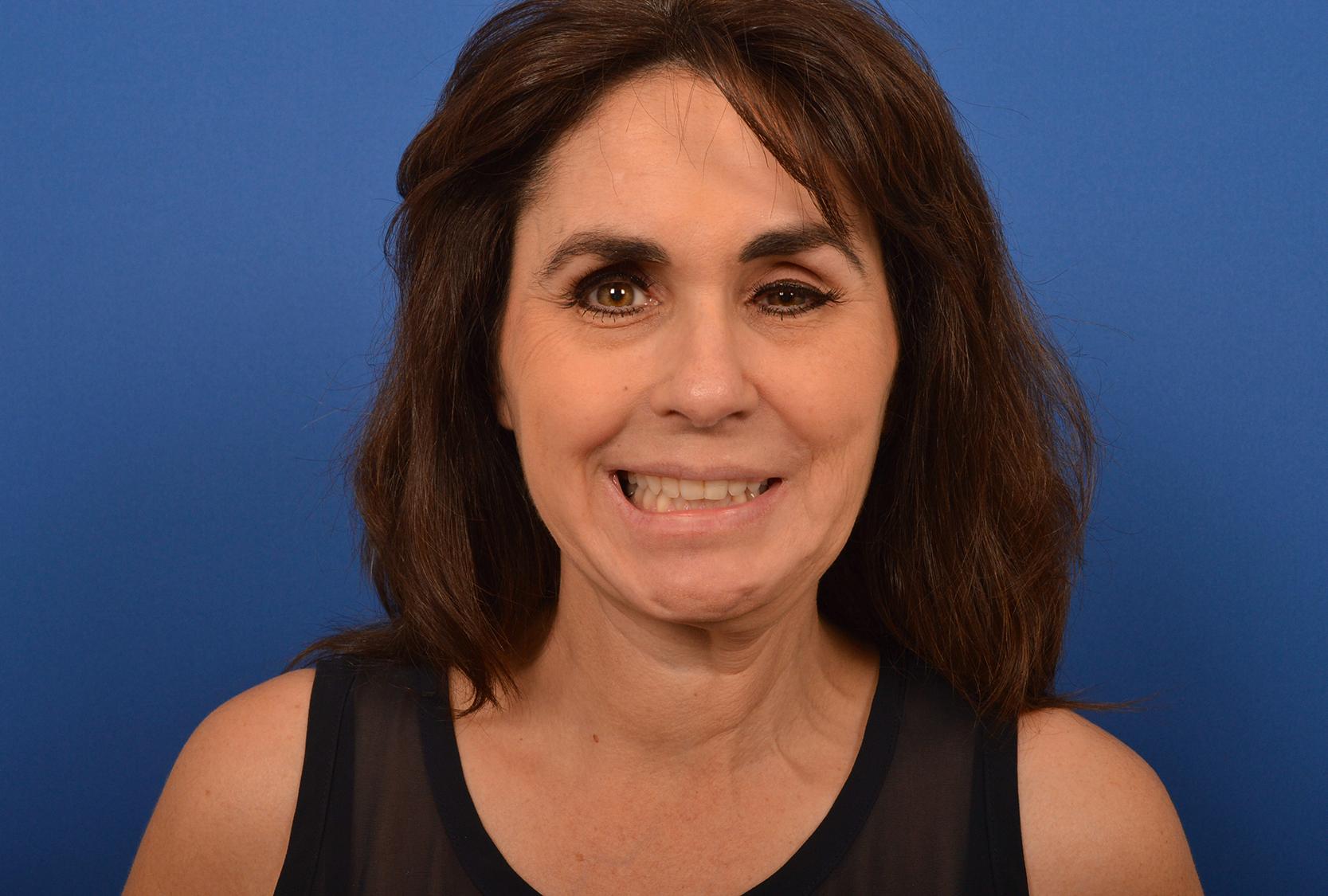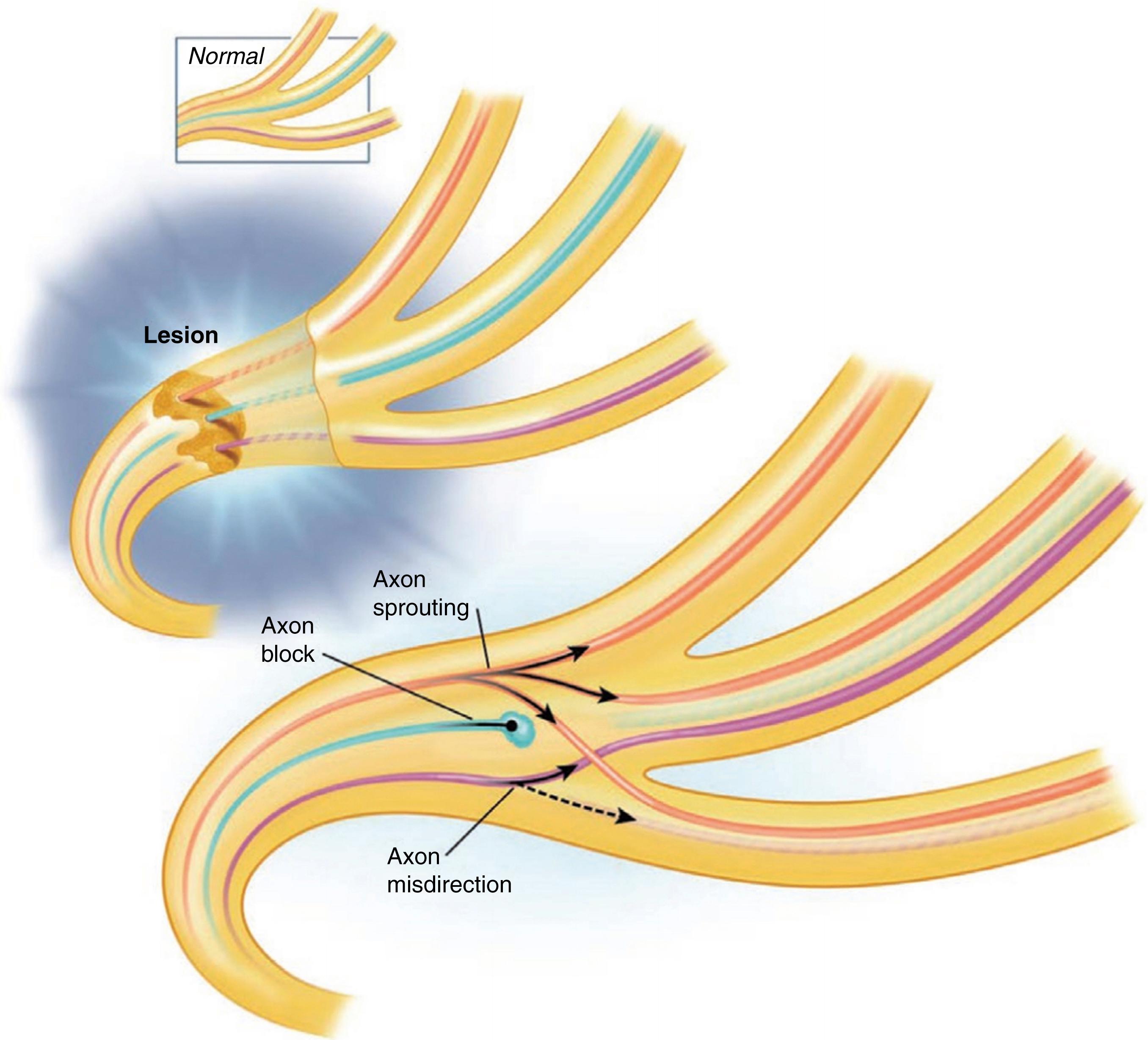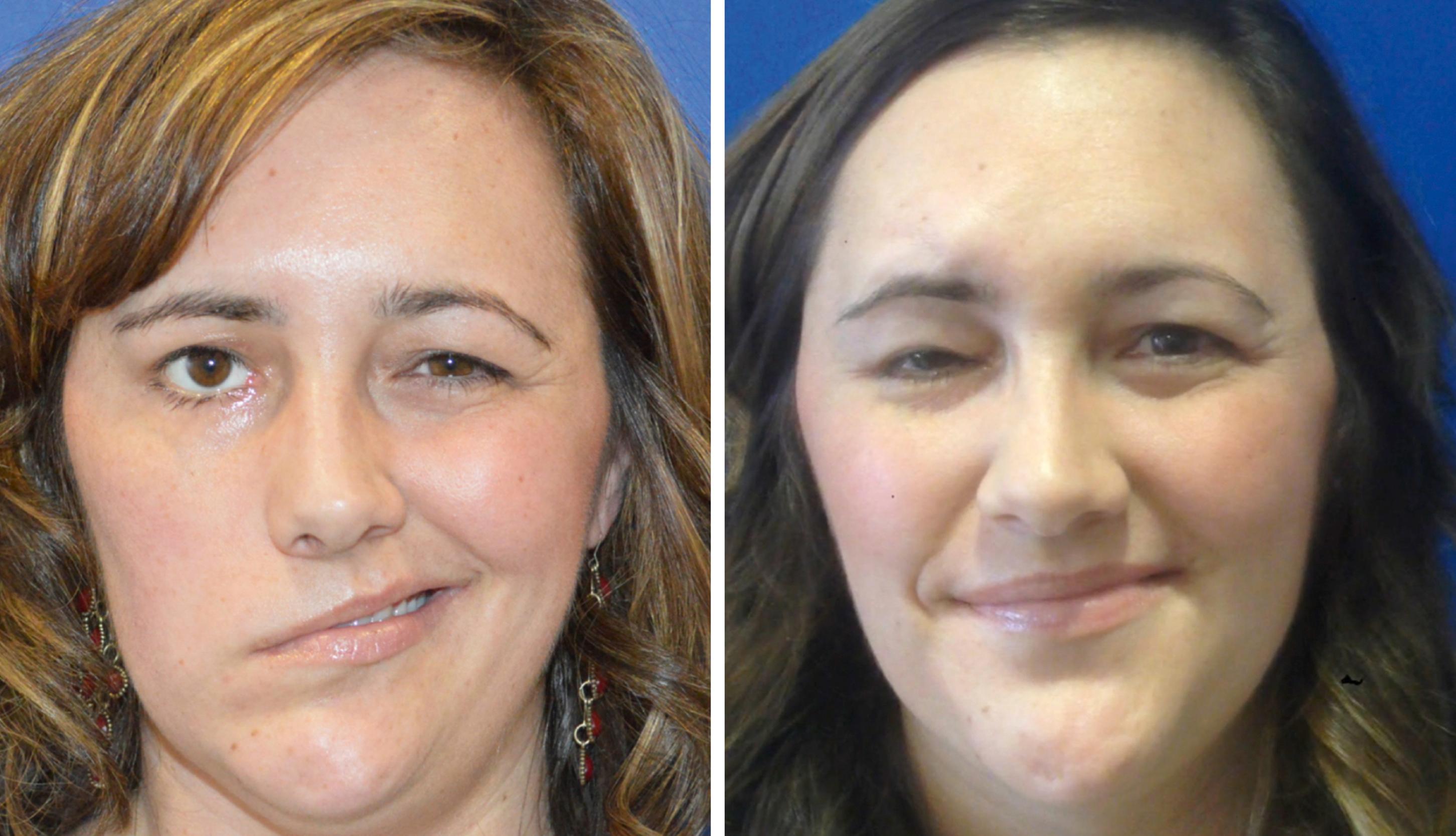Physical Address
304 North Cardinal St.
Dorchester Center, MA 02124
Features of a natural smile include spontaneity, symmetric simultaneous superolateral excursion of the oral commissure, appropriate orientation of the nasolabial fold, and symmetrical upper and lower teeth show. , These components are compromised in patients with facial palsy and almost all facial reanimation options do not obtain a significant number of these key features of a normal smile. The only way to attain these components is to maintain the entire neural pathway of facial expression. Unlike complete flaccid facial paralysis, patients with post–facial paralysis with synkinesis (PFPS) have functional smile muscles with completely intact neural input ( Fig. 11.1 )

Synkinetic patients have smile dysfunction due to overactivity and uncoordinated movement of counterproductive muscles such as platysma, buccinators, depressor anguli oris (DAO), and orbicularis oris. The most supported theory of PFPS is aberrant facial nerve regeneration where proximal axons reroute, sprout, and/or degenerate, leading to abnormal reinnervation of both correct and inappropriate muscles ( Fig. 11.2 ).

The aim of treatment is always to improve cosmesis and spontaneous smile function as well as functional deficits such as oral incompetence and cervicofacial tightness. There are a number of surgical and nonsurgical management approaches used at present to treat synkinesis, including neuromuscular retraining, chemodenervation, and surgery. These options are complementary and synergistic and in the authors’ experience, together yield the optimal outcome for individuals with PFPS. , This chapter will focus on surgical options for smile reanimation as other sections of the book discuss nonsurgical and eyelid management.
Masseteric-facial nerve transfer for reinnervation of patients with an irreversible complete facial paralysis of less than 2-years duration has gained popularity ( Fig. 11.3 ). “Supercharging” of the facial nerve with the masseteric nerve has also been proposed for individuals with post-paralysis with synkinesis to increase the voluntary excursion of oral commissure.

Although this approach can theoretically serve a role in improving the oral commissure excursion, the masseteric nerve does not provide a spontaneous and involuntary smile mechanism for patients with synkinesis.
Furthermore, the underlying factors that lead to synkinesis—specifically the overactivity of buccinator, DAO, platysma, and orbicularis—are not addressed with this technique.
Become a Clinical Tree membership for Full access and enjoy Unlimited articles
If you are a member. Log in here